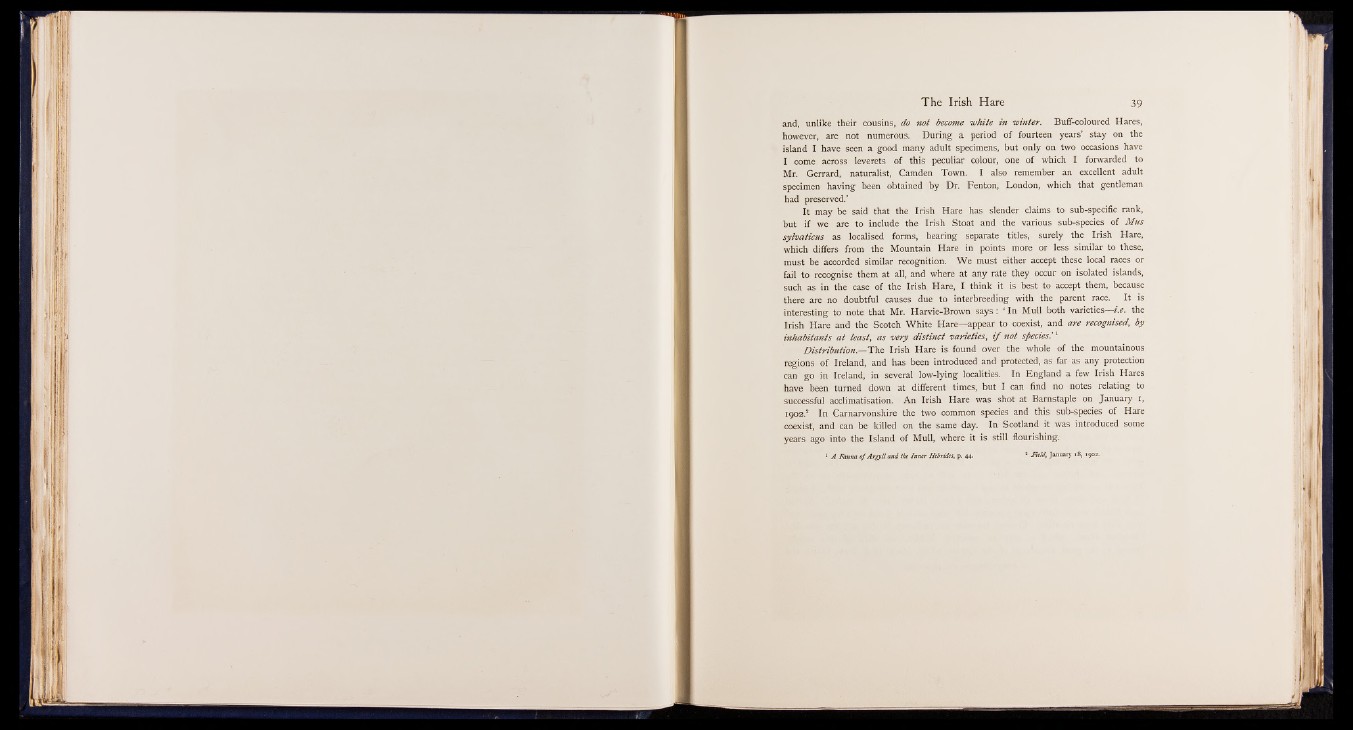
and, unlike their cousins, do not become white in winter. Buff-coloured Hares,
however, are not numerous. During a period of fourteen years’ stay on the
island I have seen a good many adult specimens, but only on two occasions have
I come across leverets of this peculiar colour, one of which I forwarded to
Mr. Gerrard, naturalist, Camden Town. I also remember an excellent adult
specimen having been obtained by Dr. Fenton, London, which that gentleman
had preserved.’
It may be said that the Irish Hare has slender claims to sub-specific rank,
but if we are to include the Irish Stoat and the various sub-species of Mus
sylvaticus as localised forms, bearing separate titles, surely the Irish Hare,
which differs from the Mountain Hare in points more or less similar to these,
must be accorded similar recognition. We must either accept these local races or
fail to recognise them at all, and where at any rate they occur on isolated islands,
such as in the case of the Irish Hare, I think it is best to accept them, because
there are no doubtful causes due to interbreeding with the parent race. It is
interesting to note that Mr. Harvie-Brown says: 4 In Mull both varieties i.e. the
Irish Hare and the Scotch White Hare— appear to coexist, and are recognised, by
inhabitants a t least, as very distinct varieties, i f not species. '1
Distribution.— The Irish Hare is found over the whole of the mountainous
regions of Ireland, and has been introduced and protected, as far as any protection
can go in Ireland, in several low-lying localities. In England a few Irish Hares
have been turned down at different times, but I can find no notes relating to
successful acclimatisation. An Irish Hare was shot at Barnstaple on January i,
1902.2 In Carnarvonshire the two common species and this sub-species of Hare
coexist, and can be killed on the same day. In Scotland it was introduced some
years ago into the Island of Mull, where it is still flourishing.
A Fauna o f Argyll,and the Inner Hebrides, p. 44. 2 Field, January 18, 1902.